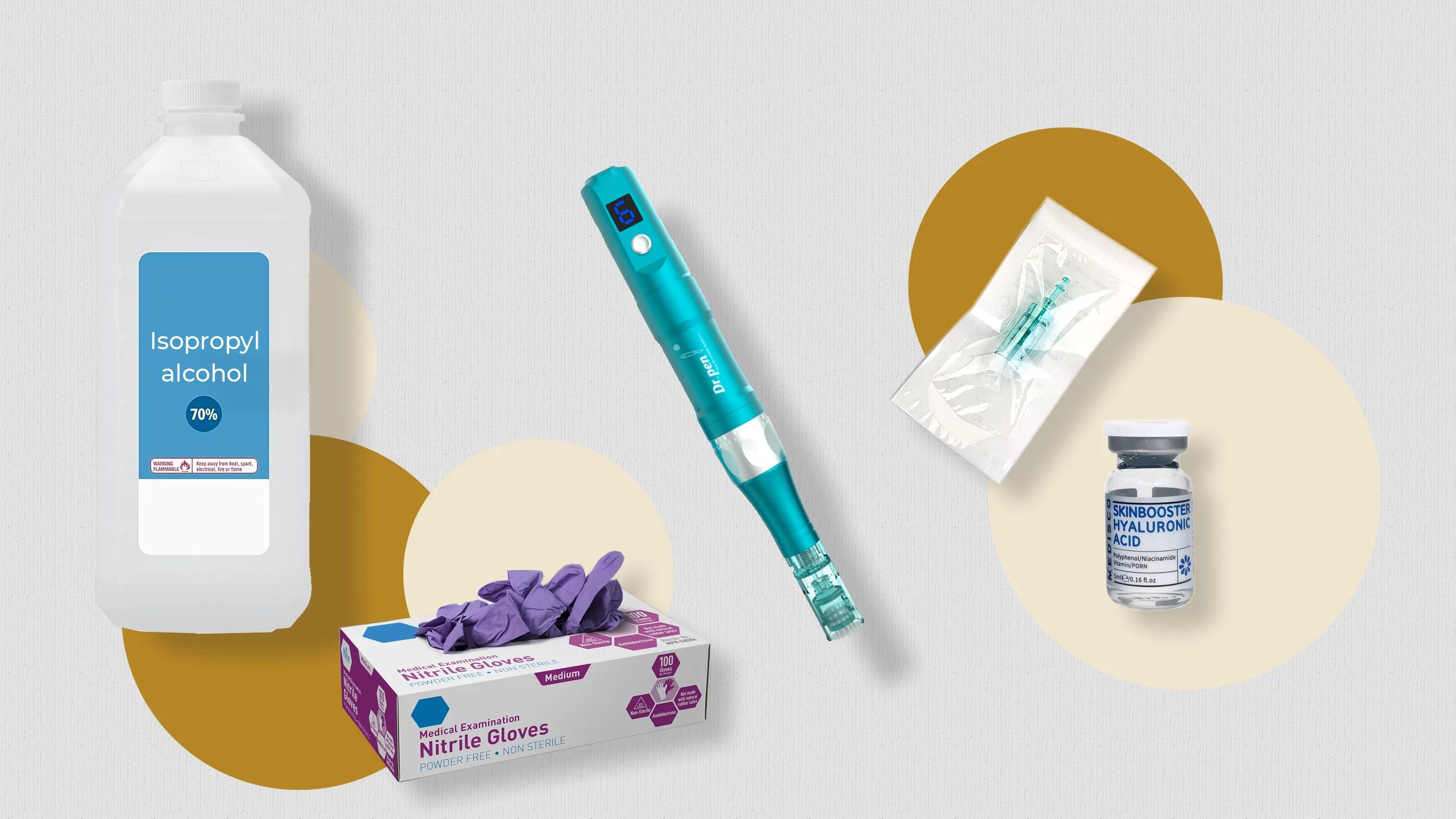Ultima A8S is the NEW Dr. Pen model with a screen displaying the current operating speed, new elegant black luxury design, fast powerful motor, and newly upgraded anti-backflow cartridges!

Heard about microneedling and want to give it a try? You're not alone! Microneedling is becoming a popular treatment for enhancing skin texture, decreasing scarring, and increasing collagen production. But before you begin, it's natural to wonder: Is microneedling safe?
Whether you are considering professional treatments or at-home systems, you need to first understand the procedure's safety, potential risks, and recommended practices.
In this blog, we'll explain how microneedling works, what measures you should take, and who should be extra careful, especially for those who are wondering whether microneedling is safe for sensitive skin or during pregnancy.

Microneedling is renowned worldwide for its effectiveness and works through a simple process. Microneedling involves creating tiny, controlled micro-injuries in the skin using fine needles.
These micro-channels stimulate the body's natural healing process, promoting the creation of collagen and elastin, two essential components for firmer, smoother skin. This regeneration process gradually improves the look of scars, fine lines, wrinkles, and even skin tone.
Whether you're asking is microneedling scalp safe or is microneedling safe for all skin types, the goal remains the same: to encourage healing from within and reveal smoother, healthier skin.
If you've been wondering," Is it safe to do microneedling at home?" Yes, provided that you follow the right treatment process. By following a few key notes, you can help make sure your treatment is safe and effective and that it gives you the best possible results.
To avoid injuring deeper layers of skin, at-home microneedling devices should utilize shorter needles (up to 1.0 mm in length). Deeper microneedling (more than 1.0 mm) should only be done by qualified specialists.
Certified providers have advanced training, ensuring proper depth, sanitation, and technique. While home microneedling devices like microneedling pens are safe, users must strictly follow guidelines and hygiene practices.
Whether at home or a clinic, sterile equipment is required to ensure complete safety during your treatment. To avoid infection, devices must be thoroughly cleaned and sterilized before each use.
Overall, as long as you follow the right instructions for your device and maintain proper aftercare, microneedling at home can be a safe and effective way to improve your skin.
While microneedling is generally safe for most individuals, it's important to be aware of the potential risks and side effects. Here are some to keep in mind:
On that note, if you are asking, "Is microneedling safe for dark skin?", yes, it is when done correctly. Microneedling is considered safe and effective for darker skin tones, compared to more invasive laser treatments with higher risks of pigmentation changes.
Although microneedling is typically well tolerated by most people, it's not the proper treatment for everyone. Individuals who should avoid microneedling include:
Talking to a dermatologist or qualified professional before starting microneedling is the best way to make sure it's safe and right for your skin and health. Getting personalized advice can help lower risks and give you better results.

If you're wondering about the risks and asking, is it safe to use a microneedling pen at home, the answer depends mainly on how well you prepare and care for your skin before and after treatments. Here are some ways that you can minimize the risks:
With proper preparation, technique, and aftercare, microneedling is still one of the safest and most effective skin rejuvenation procedures available today.
Whether you're treating acne scars, wrinkles, or enhancing product absorption, microneedling offers a safe, proven path to better skin.
Explore the trusted systems and tools at Dr. Pen and start your safe microneedling journey today!
Best Ingredients for Younger-Looking Skin
Discover the most effective anti-aging skincare ingredients — retinol, peptides, vitamin C, niacinamide, and more — for firmer, smoother, younger-looking skin.
All About Microneedling With Exosomes
Discover how microneedling with exosomes accelerates skin repair, boosts collagen, reduces wrinkles, and enhances glow. Learn benefits, safety, and results.
The Ultimate Guide to Microneedling Serums for Glowing Skin
Learn how microneedling serums boost collagen, improve skin texture, and enhance glow. Discover the best ingredients and how to choose the right serum.